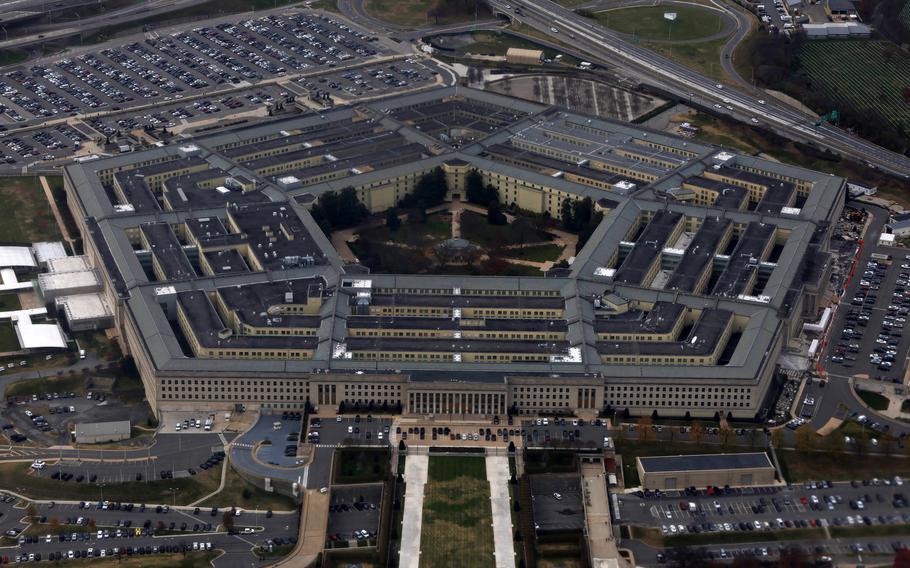Opinion
Budget efficiencies should start with the Pentagon
Tribune News Service February 12, 2025

Any viable plan to trim federal spending needs to start with the Pentagon, which at about $900 billion per year accounts for over half of the federal discretionary budget. Furthermore, the department is plagued by cost overruns, and it too often purchases dysfunctional weapons systems that don’t perform as advertised and don’t align with the department’s own declared strategy. (Alex Wong, Getty Images/TNS)
Well before he took office, President Donald Trump promised to dramatically reduce the federal budget and delegated the task of finding potential cuts to Elon Musk and the Department of Government Efficiency.
Musk originally claimed he could find $2 trillion in cuts — nearly one-third of the entire federal budget — and then lowered his sights to “only” $1 trillion. Both figures are wildly unrealistic, unless the administration changes its tune and addresses Social Security and Medicare solvency.
Any viable plan to trim federal spending needs to start with the Pentagon, which at about $900 billion per year accounts for over half of the federal discretionary budget. Furthermore, the department is plagued by cost overruns, and it too often purchases dysfunctional weapons systems that don’t perform as advertised and don’t align with the department’s own declared strategy.
Our organizations — Taxpayers for Common Sense and the Quincy Institute — along with the Stimson Center, have compiled a list of potential cuts that would save money and make America safer.
They include big ticket items like the F-35 combat aircraft, new aircraft carriers, and the Sentinel intercontinental ballistic missile — systems that either can’t carry out their assigned missions or are irrelevant to the most significant military challenges we face.
The F-35 was designed to carry out a wide range of missions, from winning aerial dogfights to landing on aircraft carriers to providing close air support to troops on the ground. It does none of them well. In addition, it is so complex and poorly designed that it spends much of its time out of service, grounded for maintenance and repairs. Twenty-three years into the program, it still has hundreds of unresolved defects.
As for aircraft carriers, they are increasingly vulnerable to modern high-speed missiles. Buying more at up to $13 billion each would be throwing good money after bad.
Similarly, the Sentinel ICBM is increasingly vulnerable in the era of hypersonic missiles, and with advances in our nation’s nuclear-armed submarines and bombers, ICBMs now offer no meaningful capabilities that aren’t found elsewhere in our arsenal. With a price tag that’s ballooned by 81% since 2022, the Sentinel is a redundancy we don’t need at a price we can’t afford.
Further savings within the Pentagon budget can be realized by tackling price gouging and trimming the Pentagon’s bloated force of over 500,000 private contractors. It’s not clear whether the department even knows how many contractors it employs, or how many do duplicative tasks that could be done better and cheaper by government employees. Cutting spending on contractors by 15% would save $26 billion per year.
In all, the measures outlined in our analysis could save $60 billion in the first year, and hundreds of billions in the years to come. The savings would free up funding that could be put to better use, whether by reinvesting it in more reliable Pentagon programs, investing in non-military threats to national security like pandemics and climate change, or paying down the nation’s massive debt.
Even greater savings could be achieved by adopting a more realistic defense strategy that abandons our current “cover the globe” approach, which assumes that the U.S. should be able to fight any battle, anywhere, anytime. A genuinely defensive strategy that relies on military force only when absolutely necessary and calls on allies to do more in their own defense would be both cheaper and more effective.
Any efficiency package that excludes reductions at the Pentagon will be a hollow promise. We don’t need more spending at the Department of Defense, we need more spending discipline. National security and fiscal responsibility demand that we hold the Pentagon to the same standards as the rest of the federal government when it comes to budget scrutiny.
William D. Hartung is a senior research fellow at the Quincy Institute for Responsible Statecraft. Gabe Murphy is a policy analyst at Taxpayers for Common Sense, a nonpartisan budget watchdog calling out wasteful spending and advocating for transparency.
©2025 Tribune Content Agency, LLC.